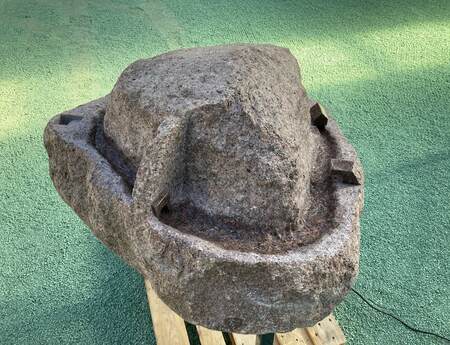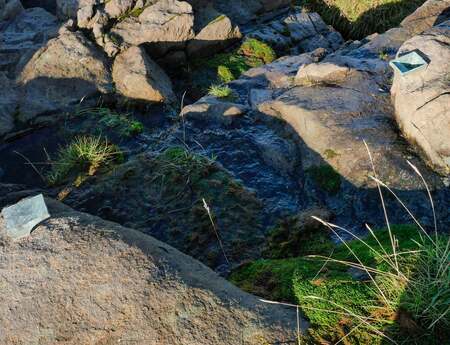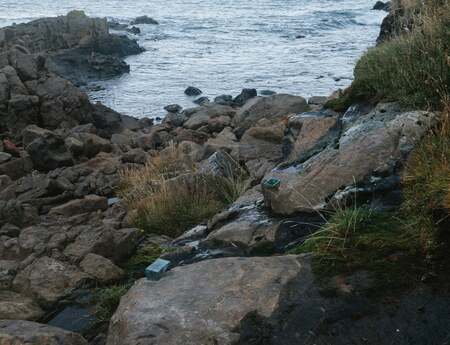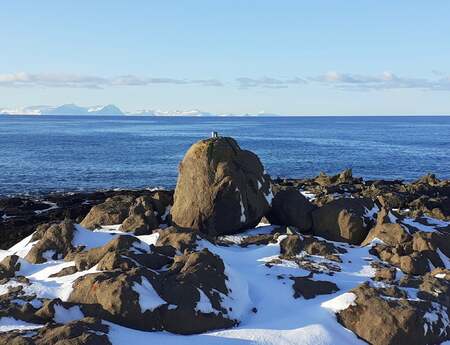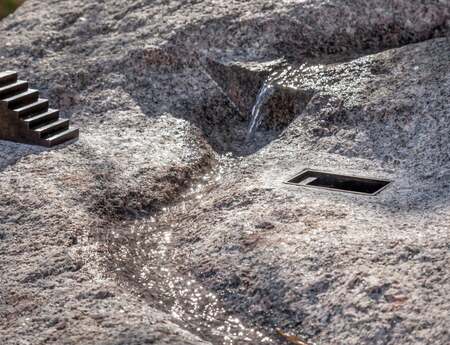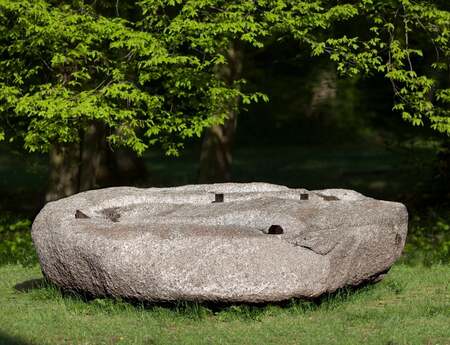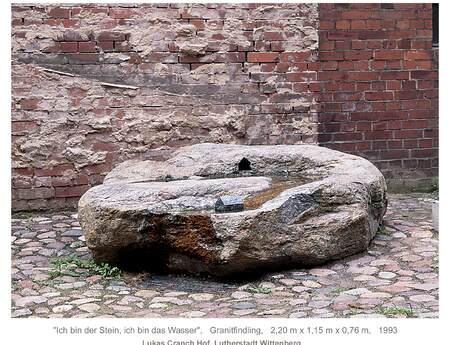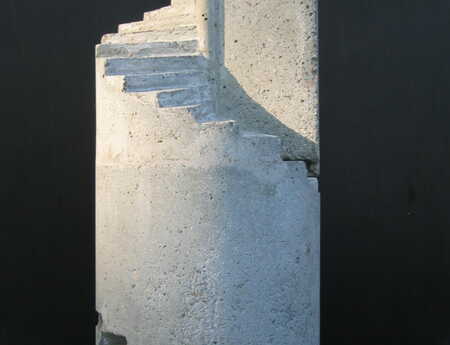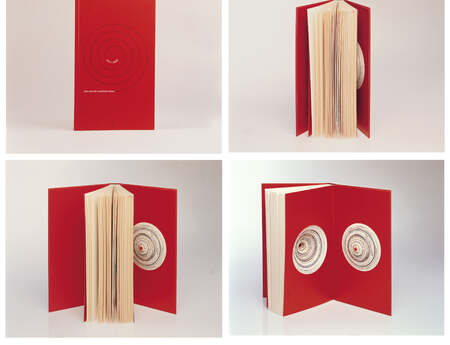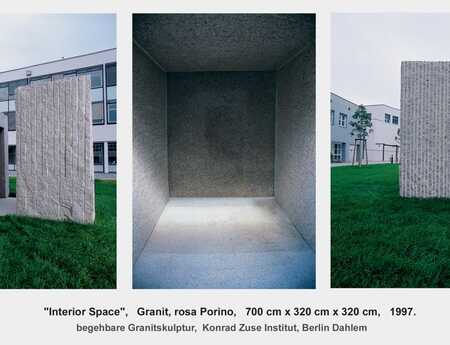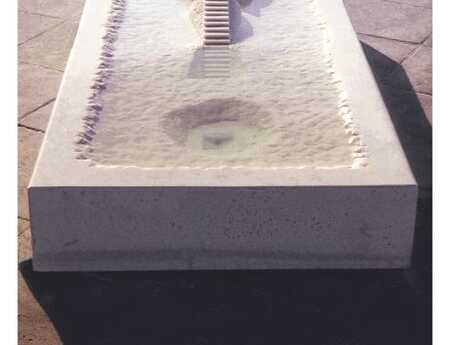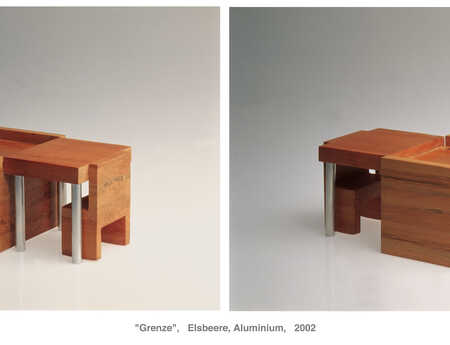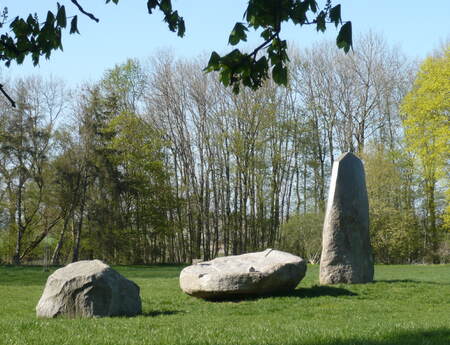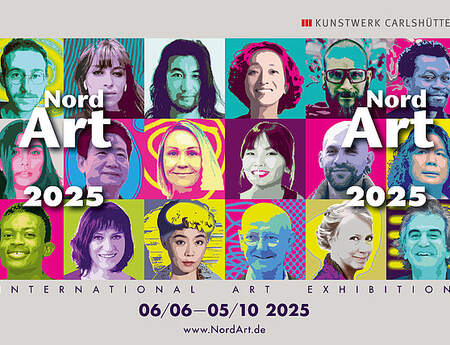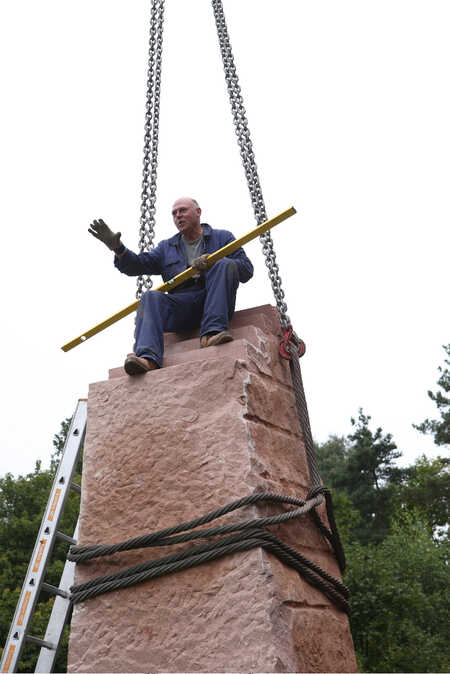
The sculptures of the sculptor Rainer Fest are of an unusual kind, marking a very individual position in the field of contemporary art expressions, gained more from personal life experience than from reference to art history or even an orientation towards the market. Rainer Fest is one of those lonely individuals who pursue art out of an inner passion of a spiritual nature.
Katrin Arrieta
The central concept around which Rainer Fest ́s art revolves is connection. This theme runs through his entire oeuvre. He works with the superficially incompatible, and he searches for the spaces between the opposites, for the representation of the invisible, for the hidden unity, since the poles always belong together somehow, like negative and positive, matter and spirit, this world and the hereafter, life and death.
Sigrun Angermann
Rainer Fest is aware of the magical, prehistoric, archaic qualities inherent in boulders as sculptural material. His sculptures refer precisely to such a context, which deliberately turns away from the hectic hustle and bustle of fashion and technology.
Marc Wellmann
The consistent theme of my work is the visualisation that the manifestation of things takes place on a dual level, but that this manifestation conceals an all-encompassing unity. So art, as I understand it, also takes place on two levels: that of the material appearance of the work and that of the immaterial, spiritual level, where art reaches people directly. Art connects people in their own material manifestation, their physicality, with the philosophical, spiritual level and is therefore a possible link that opens up awareness of being integrated into an expanding horizon. I call this realisation the reintegration of the human being through art. I often work with pairs of opposites that recognisably belong together or have belonged together and are brought together again within a work. They are brought back into unity either by the viewer recognising and understanding them, through their body, or, as in my fountain sculptures for example, with the help of water.
I split stones, put them back together again, work with positive and negative forms and create places with my large sculptures, such as the Metaphysical Landscape in Hohen Luckow, where the opposites of heaven and earth are connected and we as humans can move between them and expose ourselves to the two polar forces of heaven and earth. Or Interior Space, a large sculpture for the Konrad Zuse Institute in Berlin-Dahlem, created from a 180 tonne granite monolith that I hollowed out and in which I work with the opposites of emptiness and fullness: when people enter the emptiness of the stone, they see and recognise themselves on a polished back wall. Something new always emerges from the union of opposites, as here, for example, realisation.
